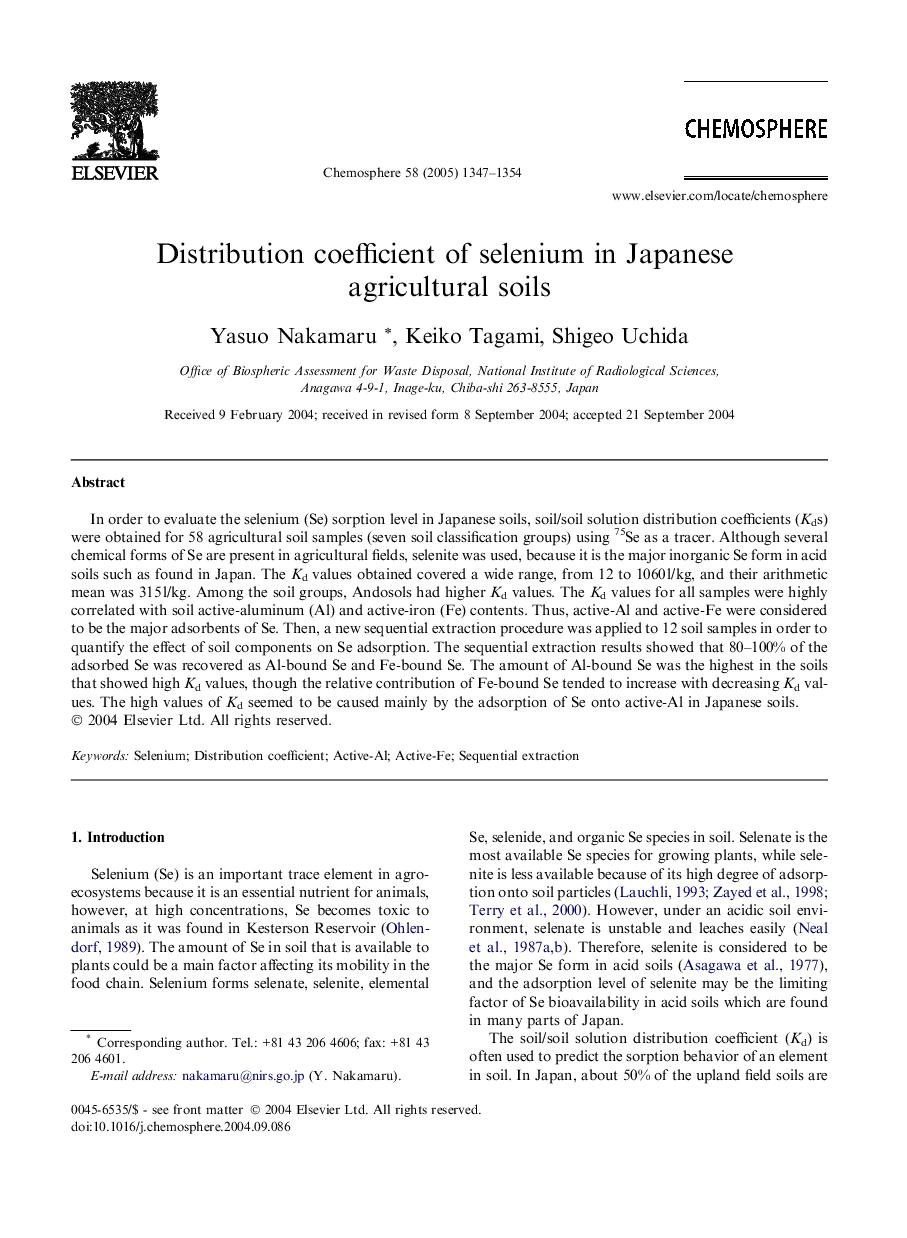| Article ID | Journal | Published Year | Pages | File Type |
|---|---|---|---|---|
| 9452128 | Chemosphere | 2005 | 8 Pages |
Abstract
In order to evaluate the selenium (Se) sorption level in Japanese soils, soil/soil solution distribution coefficients (Kds) were obtained for 58 agricultural soil samples (seven soil classification groups) using 75Se as a tracer. Although several chemical forms of Se are present in agricultural fields, selenite was used, because it is the major inorganic Se form in acid soils such as found in Japan. The Kd values obtained covered a wide range, from 12 to 1060Â l/kg, and their arithmetic mean was 315Â l/kg. Among the soil groups, Andosols had higher Kd values. The Kd values for all samples were highly correlated with soil active-aluminum (Al) and active-iron (Fe) contents. Thus, active-Al and active-Fe were considered to be the major adsorbents of Se. Then, a new sequential extraction procedure was applied to 12 soil samples in order to quantify the effect of soil components on Se adsorption. The sequential extraction results showed that 80-100% of the adsorbed Se was recovered as Al-bound Se and Fe-bound Se. The amount of Al-bound Se was the highest in the soils that showed high Kd values, though the relative contribution of Fe-bound Se tended to increase with decreasing Kd values. The high values of Kd seemed to be caused mainly by the adsorption of Se onto active-Al in Japanese soils.
Related Topics
Life Sciences
Environmental Science
Environmental Chemistry
Authors
Yasuo Nakamaru, Keiko Tagami, Shigeo Uchida,
